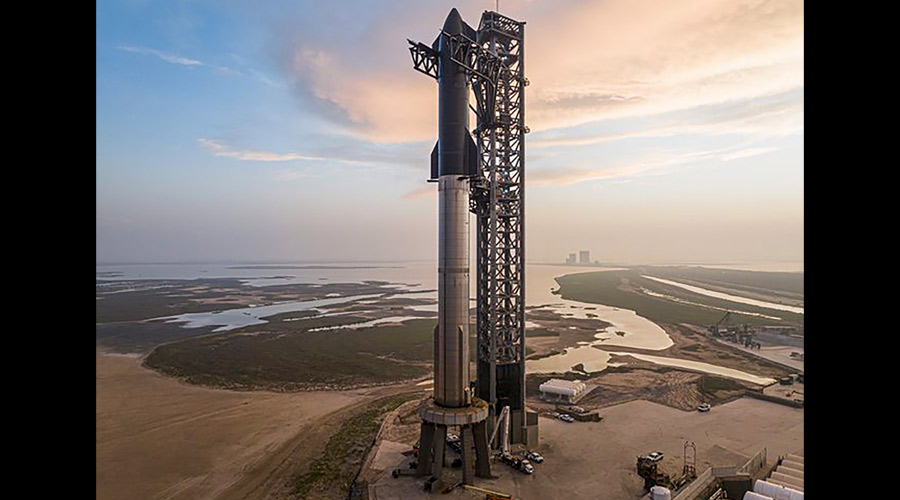Elon Musk's SpaceX made final preparations early on Monday to launch its powerful new Starship rocket system to space for the first time, on a brief but highly anticipated uncrewed test flight from the Gulf Coast of Texas.
The two-stage rocketship, standing taller than the Statue of Liberty at 394 feet (120 m) high, was due for blastoff from the SpaceX facility at Boca Chica, Texas, during a two-hour launch window that opens at 8 am EDT (1200 GMT).
The test mission, whether or not its objectives are entirely met, represents a key milestone in SpaceX's ambition of sending humans back to the moon and ultimately to Mars - also the central goal of a renewed NASA spaceflight program intended to integrate the Starship.
But SpaceX faces enormous challenges in merely launching a spacecraft that would instantly become, if it successfully gets off the ground, the most powerful rocket on Earth.
"Success is not what should be expected,” Musk told a private Twitter audience on Sunday night, saying the best-case scenario would provide crucial data about how the vehicle ascends to space and how it will fly back to Earth.
"Probably, tomorrow will not be successful, he said.“It's just a very fundamentally difficult thing.”
Earlier on Sunday, the California-based company said on Twitter its launch teams were moving ahead with flight preparations, while keeping a close eye on potential wind-shear conditions in the forecast that could force a delay.
On Sunday night, Musk said,“it's more likely” for the flight to be postponed than to launch on Monday. SpaceX has backup launch windows on Tuesday and Wednesday for roughly the same times.
'Like a meteor'
Both the lower-stage Super Heavy booster rocket and the upper-stage Starship cruise vessel it will carry to space are designed as reusable components, capable of flying back to Earth for soft landings - a maneuver that has become routine for SpaceX's smaller Falcon 9 rocket.
But neither stage will be recovered for the expendable first test flight to space, expected to last no more than 90 minutes.
Prototypes of the Starship cruise vessel have made five sub-space flights up to 6 miles (10 km) above Earth in recent years, but the Super Heavy booster has never left the ground.
In February, SpaceX did a test-firing of the booster, igniting 31 of its 33 Raptor engines for roughly 10 seconds with the rocket bolted in place vertically atop a platform.
The Federal Aviation Administration just last Friday granted a license for what would be the first test flight of the fully stacked rocket system, clearing a final regulatory hurdle for the long-awaited launch.
If all goes as planned on Monday, all 33 Raptor engines will ignite simultaneously to loft the Starship on a flight that nearly completes a full orbit of the Earth before it re-enters the atmosphere and free-falls into the Pacific at supersonic speed about 60 miles (97 km) off the northern Hawaiian islands.
After separating from the Starship, the Super Heavy booster is expected to execute the beginnings of a controlled return flight before plunging into the Gulf of Mexico.
Starship's blazing re-entry over the Pacific will test its ability to aerodynamically steer itself using large flaps and for its heat shielding to withstand the intense friction generated as it plummets through the atmosphere.
"The ship will be coming in like a meteor,” Musk said. “This is the first step in a long journey that will require many flights.”
Additional Super Heavy boosters were already on deck in Boca Chica for future test flights, he added.
As designed, the Starship rocket is nearly two times more powerful than NASA's own Space Launch System (SLS), which made its debut uncrewed flight to orbit in November, sending a NASA cruise vessel called Orion on a 10-day voyage around the moon and back.











